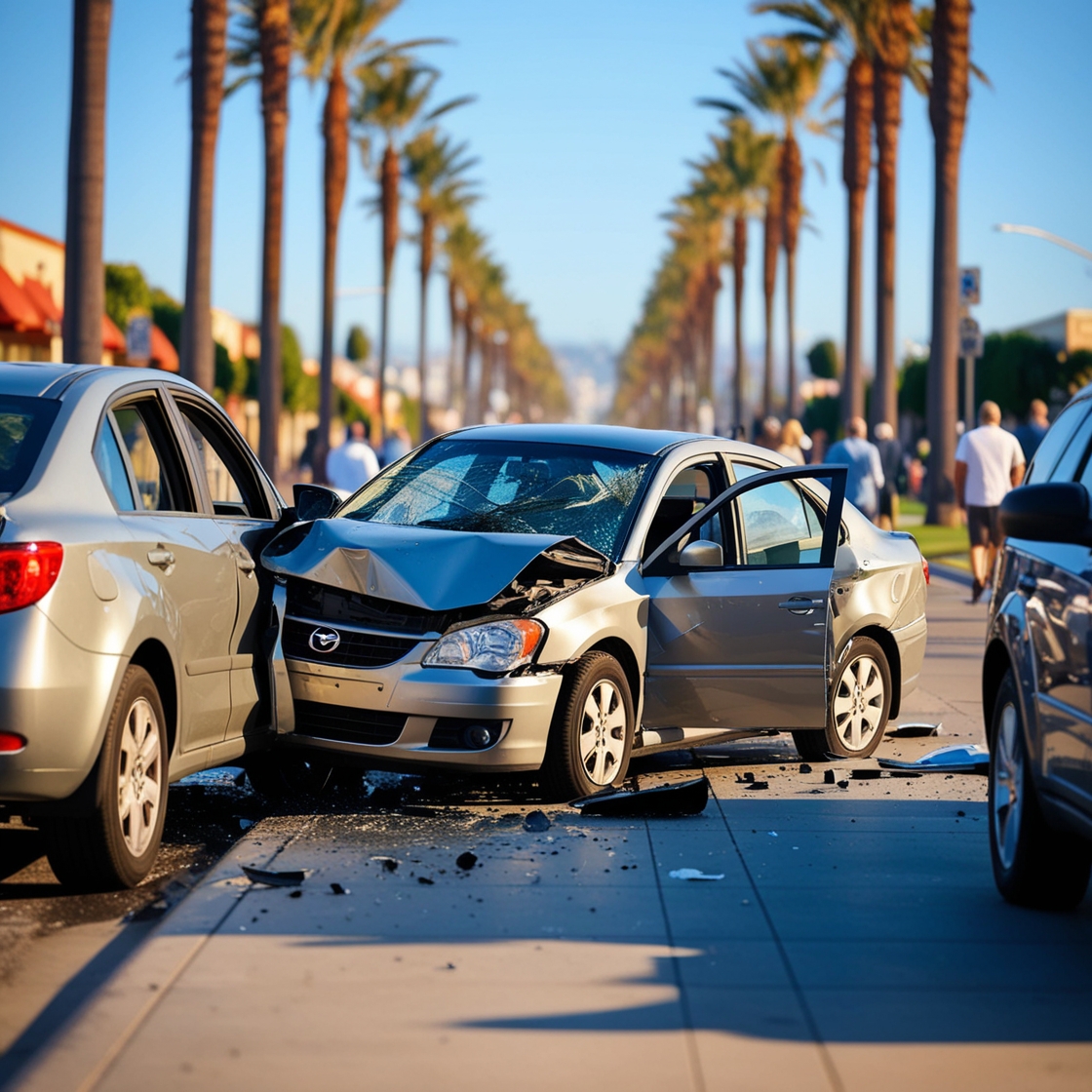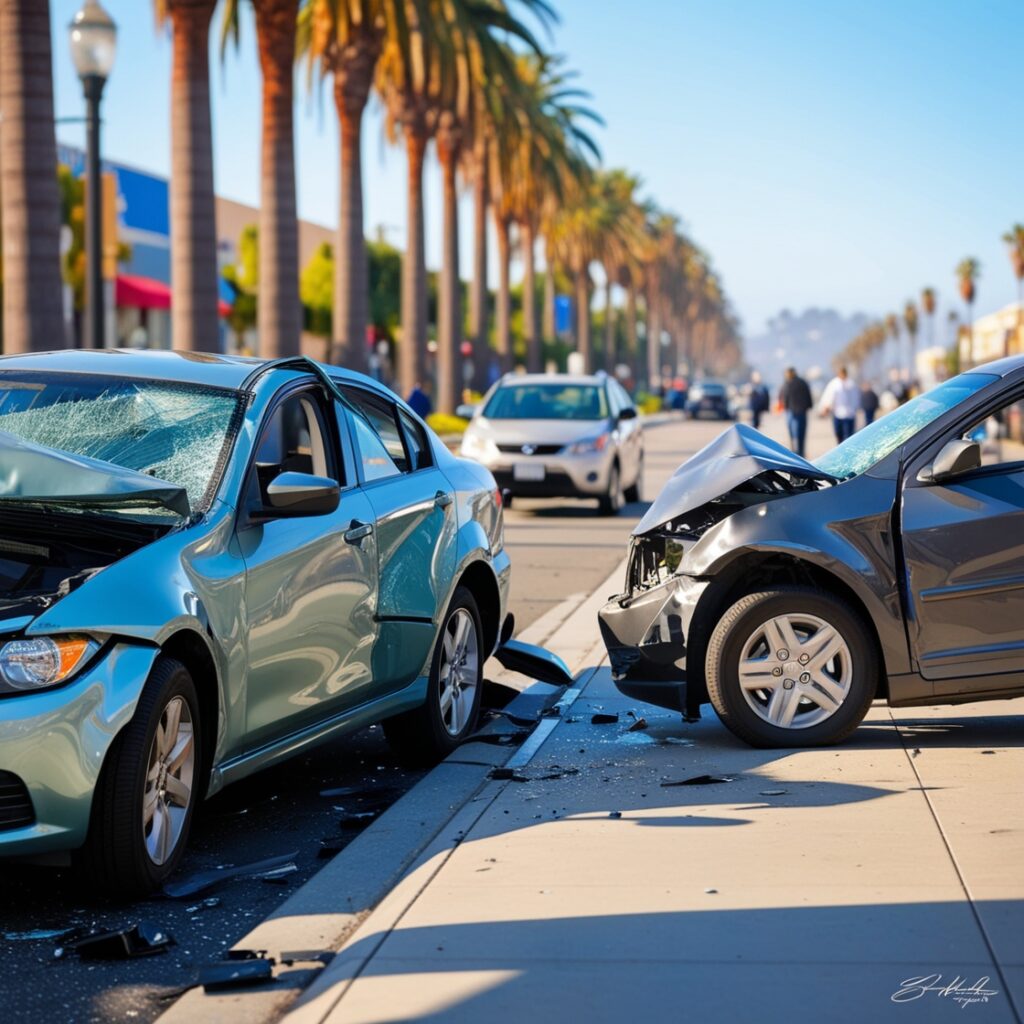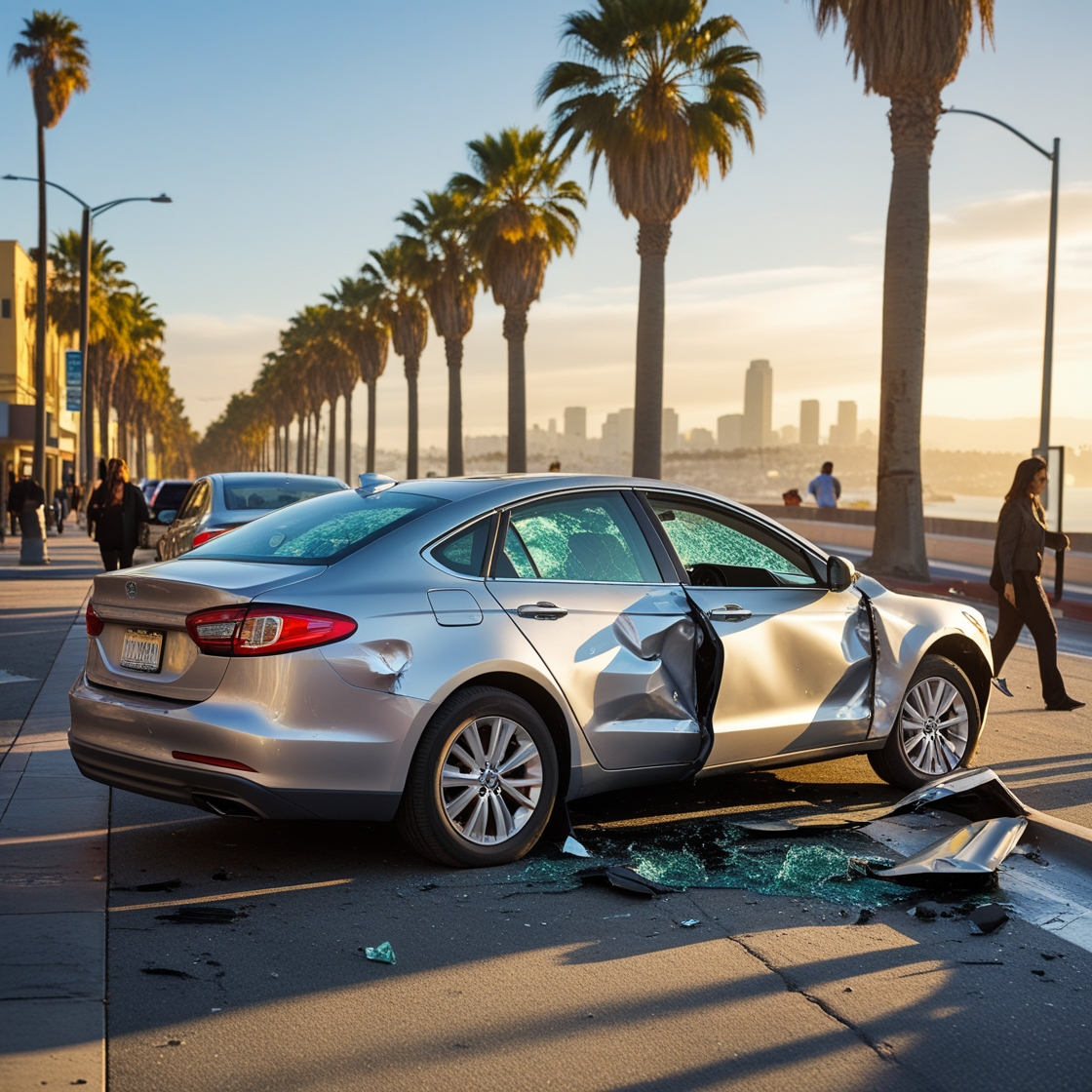
Rideshare Driver Hit My Car – Who Pays? A Complete Guide
Uber Driver Hit My Car San Diego California
Being involved in a car accident is stressful enough, but when the other driver works for a rideshare company like Uber or Lyft, determining liability and compensation becomes significantly more complex. Many victims find themselves asking, “If a rideshare driver hit my car, who pays for the damages?” This question is becoming increasingly common as rideshare services continue to grow in popularity across San Diego and nationwide.
As experienced personal injury attorneys at Credible Law in San Diego, we’ve handled numerous cases involving rideshare accidents and understand the unique challenges they present. In this comprehensive guide, we’ll walk you through everything you need to know about rideshare accident liability, insurance coverage considerations, and how to protect your rights after being hit by an Uber or Lyft driver.
Understanding Rideshare Driver Liability: The Basics
Who Is Responsible When a Rideshare Driver Causes an Accident?
When a rideshare driver hits your vehicle, determining who pays for damages depends largely on the driver’s status within the rideshare app at the time of the accident. Unlike traditional taxi services, rideshare drivers are typically classified as independent contractors rather than employees, creating a complex liability landscape.
The responsible party could be:
- The rideshare driver’s personal insurance
- The rideshare company’s commercial insurance policy
- A combination of both policies
- Other parties in certain circumstances
The key factor that determines liability is what’s known as the “period” or “phase” the driver was in when the accident occurred.
The Three Periods of Rideshare Operation
Rideshare companies like Uber and Lyft structure their insurance coverage based on three distinct periods of driver activity:
Period 0: App Off
When the driver is not logged into the rideshare app, they are considered to be using their vehicle for personal purposes. In this scenario:
- The rideshare driver’s personal auto insurance is solely responsible for covering damages
- The rideshare company provides no coverage whatsoever
- You would file a claim against the driver’s personal policy just as in any other accident
Period 1: App On, Waiting for a Ride Request
When the driver is logged into the app but hasn’t yet accepted a ride request:
- The driver’s personal auto insurance remains the primary coverage
- Rideshare companies typically provide limited liability coverage as secondary insurance
- This limited coverage usually includes:
- $50,000 per person for bodily injury
- $100,000 per accident for bodily injury
- $25,000 per accident for property damage
During this period, there’s often a “coverage gap” that can complicate claims.
Period 2: Ride Accepted, En Route to Passenger
Once the driver accepts a ride and is on the way to pick up the passenger:
- The rideshare company’s commercial policy becomes the primary coverage
- This typically includes $1 million in liability coverage
- Contingent comprehensive and collision coverage may also apply
Period 3: Passenger in Vehicle
When a passenger is in the vehicle during an active trip:
- The rideshare company’s $1 million commercial liability policy applies
- Additional coverage for uninsured/underinsured motorists is often provided
- This is typically the highest level of coverage in the rideshare insurance structure
What To Do If a Rideshare Driver Hits Your Car
If you’ve been hit by a rideshare driver, taking the right steps immediately after the accident can significantly impact your ability to receive fair compensation:
1. Ensure Safety and Call 911
- Check for injuries and seek medical attention if needed
- Move to a safe location if possible
- Call 911 to report the accident and request police assistance
2. Document Everything
- Take photos of all vehicles involved, showing damage from multiple angles
- Photograph the accident scene, including road conditions and traffic signals
- Get the rideshare driver’s information, including:
- Name, contact information, and driver’s license number
- Insurance information (both personal and rideshare)
- Rideshare company they work for (Uber, Lyft, etc.)
- Vehicle information (make, model, license plate)
- Ask if they were actively logged into the app and what “period” they were in
3. Gather Witness Information
- Collect contact information from any witnesses
- Ask if anyone nearby has dashcam footage
- Note if the rideshare driver had a passenger at the time
4. File a Police Report
- Ensure officers create an official report
- Request a copy of the report or the report number
- Be factual when describing the accident
5. Notify Your Insurance Company
- Report the accident to your insurer promptly
- Provide basic facts but avoid detailed statements until you’ve consulted an attorney
- Do not accept any settlement offers without legal advice
6. Seek Medical Attention
- Get examined even if injuries seem minor
- Some injuries may not be immediately apparent
- Create documentation linking injuries to the accident
7. Contact a Personal Injury Attorney
- Consult with an experienced rideshare accident attorney
- Get guidance on navigating the complex insurance situation
- Ensure all deadlines for filing claims are met
Understanding Insurance Coverage in Rideshare Accidents
Rideshare Company Insurance Policies
Both Uber and Lyft maintain similar insurance structures for their drivers, but there can be important differences in how they handle claims:
Uber’s Insurance Coverage
Uber provides the following coverage based on the driver’s status:
- Period 1: Limited liability coverage ($50,000/$100,000/$25,000)
- Periods 2 & 3: $1 million liability policy
- Contingent comprehensive and collision coverage with a $2,500 deductible during Periods 2 & 3
Lyft’s Insurance Coverage
Lyft’s coverage structure is similar:
- Period 1: Limited liability coverage ($50,000/$100,000/$25,000)
- Periods 2 & 3: $1 million liability policy
- Contingent comprehensive and collision coverage with a $2,500 deductible during Periods 2 & 3
The Coverage Gap Problem
One of the most challenging aspects of rideshare accidents occurs during Period 1. This is commonly known as the “coverage gap” because:
- The driver’s personal insurance may deny the claim since the driver was using the vehicle for commercial purposes
- The rideshare company’s limited liability coverage may be insufficient for serious accidents
- You may need to pursue claims against multiple insurance policies
Many personal auto insurance policies include “business use exclusions” that void coverage when the vehicle is being used for commercial purposes. This means if the rideshare driver was in Period 1, their personal insurance might deny coverage, forcing you to rely on the limited coverage provided by the rideshare company.
Your Insurance Options After a Rideshare Accident
Depending on your own insurance coverage, you may have additional options for recovery:
Uninsured/Underinsured Motorist Coverage (UM/UIM)
If you carry UM/UIM coverage on your policy, this can help cover your damages when:
- The rideshare driver’s insurance is insufficient
- There are coverage gaps between policies
- The rideshare driver was uninsured or underinsured
Medical Payments Coverage (MedPay) or Personal Injury Protection (PIP)
If your policy includes MedPay or PIP:
- These can cover your medical expenses regardless of fault
- They may provide compensation more quickly than waiting for liability claims
- They can supplement other recovery sources
Collision Coverage
If you have collision coverage on your policy:
- You can file a claim with your own insurance
- Your insurer will pay for your vehicle damage minus your deductible
- Your insurance company may then pursue subrogation against the responsible parties

Common Challenges in Rideshare Accident Claims
Determining the Driver’s Status
The biggest challenge in many rideshare accident cases is verifying exactly what “period” the driver was in at the time of the accident:
- Drivers may be reluctant to admit they were logged into the app
- Rideshare companies may dispute the driver’s status
- Access to app logs may require legal action
An experienced attorney can help subpoena records from the rideshare company to verify the driver’s status and determine which insurance coverage applies.
Multiple Insurance Companies and Shifting Responsibility
Rideshare accidents often involve multiple insurance companies:
- The driver’s personal auto insurance
- The rideshare company’s insurance
- Your own insurance company
Each insurer typically tries to minimize their liability by shifting responsibility to others. This can lead to:
- Delayed claims processing
- Denial of valid claims
- Lower settlement offers
- The need for extensive negotiation
Proving Damages and Liability
As with any accident claim, you’ll need to prove:
- The rideshare driver was at fault
- Your injuries and damages were caused by the accident
- The extent and value of your damages
This requires thorough documentation, expert testimony, and strong legal advocacy.
How a Personal Injury Attorney Can Help
The Value of Legal Representation
Navigating a rideshare accident claim without legal representation can be extremely challenging. At Credible Law, our San Diego personal injury attorneys:
- Understand the complex interplay between personal and commercial insurance policies
- Have experience dealing specifically with Uber and Lyft accident claims
- Can properly value your claim to ensure you seek full compensation
- Know how to counter common defense tactics used by rideshare companies
What Your Attorney Will Do
When you work with a personal injury attorney after a rideshare accident, they will:
- Conduct a thorough investigation
- Obtain rideshare app logs and records
- Interview witnesses
- Review police reports and accident scene evidence
- Consult with accident reconstruction experts if needed
- Handle all insurance communications
- File claims with appropriate insurers
- Counter denial tactics
- Negotiate for fair settlements
- Prevent you from making statements that could harm your case
- Document and value all damages
- Current and future medical expenses
- Lost wages and diminished earning capacity
- Property damage
- Pain and suffering
- Emotional distress
- Prepare for litigation if necessary
- File a lawsuit within the statute of limitations
- Conduct discovery to obtain evidence
- Represent you in court proceedings
- Take your case to trial if fair settlement cannot be reached
Potential Compensation in Rideshare Accident Claims
Types of Damages You May Recover
If you’ve been hit by a rideshare driver, you may be entitled to various forms of compensation:
Economic Damages
These are quantifiable financial losses, including:
- Medical expenses (emergency care, hospitalization, surgery, medication, therapy)
- Future medical costs for ongoing treatment
- Lost wages from missed work
- Diminished earning capacity if injuries affect your ability to work
- Property damage to your vehicle
- Rental car expenses
- Other out-of-pocket costs related to the accident
Non-Economic Damages
These compensate for intangible losses, such as:
- Pain and suffering
- Emotional distress
- Loss of enjoyment of life
- Inconvenience
- Mental anguish
Punitive Damages
In cases involving extreme negligence or misconduct, punitive damages may be available to punish the wrongdoer and deter similar behavior.
Factors Affecting Compensation Amount
The value of your claim will depend on several factors:
- Severity of injuries
- Length and intensity of medical treatment
- Impact on daily life and activities
- Effect on work and income
- Clarity of liability
- Available insurance coverage
- Quality of evidence and documentation
- Skill of your legal representation
Frequently Asked Questions About Rideshare Accidents
Q: Do I file a claim with the rideshare company or the driver after an accident?
A: The appropriate claim process depends on the driver’s status at the time of the accident. Generally, you should notify both the driver’s personal insurance and the rideshare company. An attorney can help determine which policy applies and how to proceed with claims.
Q: What if the rideshare driver denies being logged into the app?
A: If the driver denies using the app at the time of the accident, your attorney can subpoena records from the rideshare company to verify their status. This is why documenting the driver’s information at the scene is crucial.
Q: How long do I have to file a claim after being hit by a rideshare driver?
A: In California, the statute of limitations for personal injury claims is generally two years from the date of the accident. However, insurance claims should be filed much sooner—ideally within days of the accident. Consulting with an attorney promptly helps ensure all deadlines are met.
Q: Can I sue the rideshare company directly?
A: Rideshare companies typically classify drivers as independent contractors rather than employees, making it difficult to hold the company directly liable. However, their insurance policies can still be responsible for covering damages. In some cases, direct claims against the company may be possible if negligence in their hiring or supervision practices contributed to the accident.
Q: What if my damages exceed the rideshare insurance policy limits?
A: If your damages exceed available insurance coverage, options may include:
- Filing a claim under your own underinsured motorist coverage
- Pursuing the driver’s personal assets
- Identifying other potentially liable parties
An experienced attorney can help identify all possible sources of recovery.
Q: Do rideshare accidents settle for more than regular car accidents?
A: Not necessarily, but rideshare accidents often involve higher insurance policy limits during Periods 2 and 3, which can lead to larger settlements for serious injuries. Each case is unique and depends on the specific circumstances and damages involved.
California Laws Affecting Rideshare Accident Claims
Transportation Network Company Regulations
California has established specific regulations for Transportation Network Companies (TNCs) like Uber and Lyft, including:
- Insurance requirements for different operational periods
- Driver background check requirements
- Vehicle inspection standards
- Accessibility requirements
These regulations can impact liability and insurance coverage in accident cases.
Pure Comparative Negligence
California follows a “pure comparative negligence” system, which means:
- You can recover damages even if you were partially at fault
- Your compensation will be reduced by your percentage of fault
- Evidence of shared responsibility can significantly impact your claim
Insurance Bad Faith Claims
If a rideshare company’s insurer unreasonably denies or delays your valid claim, you may have grounds for a bad faith insurance claim under California law.
Why Choose Credible Law for Your Rideshare Accident Case
At Credible Law, our San Diego personal injury attorneys bring specialized knowledge and experience to rideshare accident cases:
- Extensive experience handling Uber and Lyft accident claims
- Deep understanding of the complex insurance issues involved
- Proven track record of maximizing compensation for our clients
- Resources to thoroughly investigate and document rideshare accidents
- Skilled negotiators who know how to counter insurance company tactics
- Trial-ready attorneys prepared to fight for you in court if necessary
We work on a contingency fee basis, meaning you pay nothing unless we recover compensation for you. Our team is committed to providing personalized attention to each client while aggressively advocating for your rights.
Conclusion: Protecting Your Rights After a Rideshare Accident
Being hit by a rideshare driver creates a uniquely complex situation that requires specialized knowledge to navigate successfully. Understanding the driver’s status, applicable insurance coverage, and your legal rights is essential to securing fair compensation.
The most important steps you can take to protect yourself include:
- Thoroughly documenting the accident and the driver’s rideshare status
- Seeking prompt medical attention for all injuries
- Notifying all relevant insurance companies
- Consulting with an experienced rideshare accident attorney
At Credible Law, we’re committed to helping San Diego residents navigate the challenges of rideshare accident claims and secure the compensation they deserve. Our experienced team understands the nuances of these cases and will fight tirelessly to protect your interests.
If you’ve been hit by a rideshare driver, don’t navigate this complex process alone. Contact Credible Law today for a free consultation to discuss your case and learn how we can help.
This article is for informational purposes only and does not constitute legal advice. Every case is unique, and outcomes depend on the specific facts and circumstances involved. For advice about your particular situation, please contact a qualified attorney.


